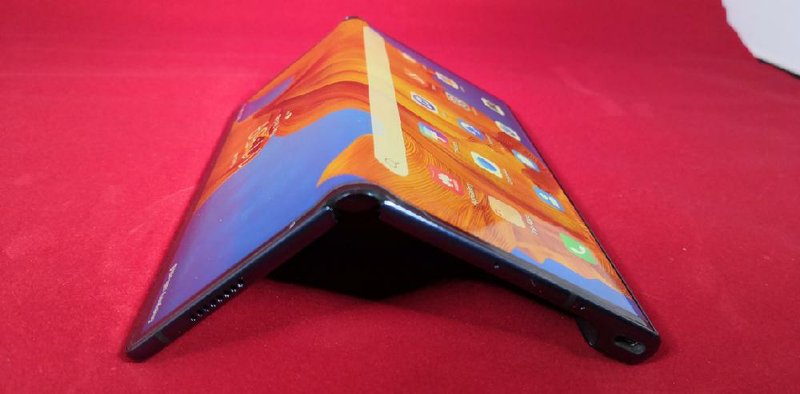LONDON -- China's Huawei unveiled its latest folding smartphone Monday and its first such device to be available internationally, competing in a niche category with new models from Samsung and Motorola.
The company took the wraps off the new Mate Xs by video instead of a media launch, as the tech show in Spain where it had planned to hold the unveiling was canceled over worries about the coronavirus outbreak.
Like its predecessor, the Mate X, which only saw limited release in China last year, the display wraps around the phone's outside.
When folded, the Mate Xs has a 6.6-inch display, which is just slightly larger than Apple Inc.'s iPhone 11 Pro Max. But when opened out, Huawei's device becomes an 8-inch tablet computer. It has three rear-facing Leica Camera-branded lenses, which double as selfie cameras when flipping the phone around in its folded form.
The company says it has a redesigned four-layer screen and upgraded "falcon wing" hinge. It also gets Huawei's latest homegrown Kirin 990 chip set, a four-lens camera system and can be used on a wider range of high-speed 5G network bands.
[Video not showing up above? Click here to watch » https://www.youtube.com/watch?v=MilMhclTnew]
However, the Mate Xs also faces a distinct disadvantage because it lacks the full Android operating system by Google. The Trump administration last year blocked Huawei's access to U.S. components and technology on national security grounds, part of a wider trade and tech war between the U.S. and China.
Instead, the Mate Xs runs a stripped-down open source version of Android. Users can still download apps but they'll be from Huawei's own app store, not the Google Play store.
Huawei, the world's No. 2 phone-maker, faces competition from Samsung and Motorola, which recently launched new folding screen smartphones.
Faced with stagnating sales as consumers hold on to their devices longer, smartphone-makers have turned to foldable technology to rejuvenate the market. It's unclear, however, whether the pricey devices will appeal to more than just die-hard tech enthusiasts.
There are also questions about reliability. Samsung's first folding device, the Galaxy Fold, was plagued by reports of screens breaking after it was unveiled last year, delaying its launch for months.
The Huawei phone is expected to go on sale in March priced at $2,700 though it's unlikely to be widely available in the U.S.
Huawei also showed off a new line of tablet computers for Europe -- the MatePad Pro 5G -- aimed at the same buyers of products like Apple's iPad Pro. It's not without its physical similarities, either.
The MatePad Pro has a 10.8-inch display compared with the iPad's 11 inches; it includes a stylus that, like the Apple Pencil, connects magnetically to the outer edge of the tablet for recharging, and is dubbed the Huawei M-Pencil. The bezel around the screen is slimmer than that of Apple's, but uses the same rounded screen corners that differentiate the iPad Pro from its cheaper brethren.
At a briefing with reporters ahead of the launch on Monday, Huawei championed the MatePad Pro's use of split-screen multitasking to run apps side-by-side and its optional magnetic keyboard case.
It does have innovations of its own, however. The tablet can mirror the display of certain Huawei smartphones if they're nearby, letting you control the phone virtually -- a bit like using a remote desktop app to use a PC from another computer. The tablet also has fifth-generation 5G wireless -- something no iPhone or iPad offers yet -- and it can be used to wirelessly charge other products, such as phones, headphones or computer mice.
However, due to the U.S. government blacklisting Huawei -- which it accuses of aiding Beijing in espionage -- last year, the company's new Mate Xs and MatePad run on versions of Android that's free and open-source, meaning they don't have apps such as Google Maps, YouTube or the Google Play store. Samsung's Android-powered tablets do not suffer such restrictions.
Huawei's been battling global scrutiny over its telecom equipment, but often overlooked is the company's rapid growth as a smartphone manufacturer. In 2018, it surpassed Apple to become the world's second-largest maker of smartphones, according to data from market research firm IDC.
Information for this article was contributed by staff members of The Associated Press and by Nate Lanxon of Bloomberg News.
Business on 02/25/2020
